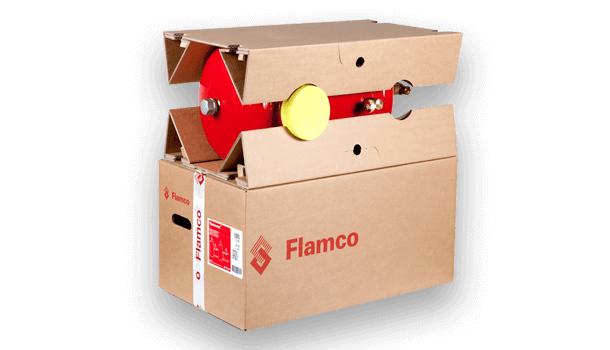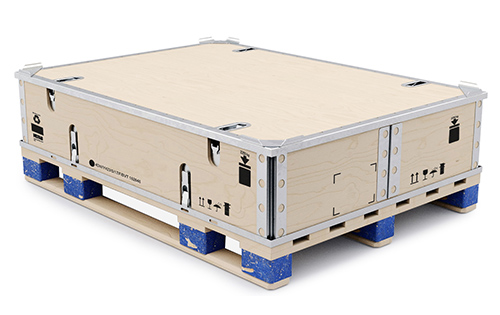Metallic Might: Industrial Metal Packaging Solutions Redefined
Reliable Industrial Recycling Solutions for Lasting Packaging: A Comprehensive Overview
In today's progressively environmentally-conscious globe, the need for sustainable product packaging remedies has actually never ever been greater. To meet this demand, organizations throughout industries are proactively looking for reliable commercial recycling services. Browsing the complicated landscape of sustainable product packaging can be challenging without a thorough overview. That's where this extensive guide on effective industrial recycling options for sustainable packaging comes in. By exploring crucial areas such as packaging product option, making for recyclability, carrying out recycling facilities, teaming up with recycling partners, and tracking and gauging recycling success, this guide will certainly outfit you with the expertise and tools required to make enlightened decisions and drive favorable modification within your organization. Whether you're a packaging professional, sustainability supervisor, or simply thinking about the subject, this overview will provide important understandings and approaches to assist you browse the world of lasting packaging.
Product Packaging Product Selection
The option of product packaging materials plays a crucial duty in ensuring the sustainability of commercial reusing options. The selection of materials is essential in reducing environmental effect and taking full advantage of reusing efficiency when it comes to lasting product packaging. Selecting the right products can help in reducing waste generation, preserve resources, and advertise a round economic situation.
Materials like cardboard, paper, glass, and particular types of plastics can be reused numerous times without losing their top quality. On the various other hand, materials that are hard to recycle, such as mixed plastics or non-recyclable composites, can create challenges for the reusing procedure and might end up in land fills or burners.
An additional factor to consider is using eco-friendly and biodegradable products. Product packaging made from renewable energies, such as plant-based plastics or biopolymers, can aid minimize reliance on nonrenewable fuel sources and alleviate climate modification. In addition, biodegradable products damage down naturally over time, reducing the buildup of waste in land fills.
Moreover, the weight and volume of packaging materials ought to be reduced to decrease transport expenses and energy usage. Light-weight materials not just need fewer resources throughout manufacturing however likewise contribute to decrease carbon discharges throughout transportation.
Designing for Recyclability
Packaging developers must focus on the usage of materials that are commonly approved for recycling and have actually established reusing facilities. Materials such as glass, aluminum, and specific kinds of plastic, like Family pet and HDPE, are typically reused and should be preferred over products that are expensive or tough to recycle.
One more essential consideration in making for recyclability is the removal of unneeded parts or products. By reducing the variety of layers, finishes, and added elements, product packaging can be made easier and simpler to recycle. Furthermore, developers need to intend to decrease the usage of mixed materials, as they can complicate the recycling procedure.

Implementing Recycling Infrastructure
Effective execution of recycling facilities is critical for the success of commercial recycling remedies. Without proper framework in place, the recycling process becomes inefficient and ineffective, impeding the general goal of lasting product packaging.
To execute reusing infrastructure properly, a number of essential aspects need to be thought about. There should be a well-organized collection system that facilitates the splitting up and collection of recyclable products. This can include designated recycling containers in public areas, along with partnerships with waste monitoring business for curbside pickup and sorting.
As soon as accumulated, the recyclable materials require to be transported to reusing facilities in a timely manner. This needs efficient logistics and transport networks, making sure that the materials get to the suitable centers i thought about this right away.
At the reusing facilities, progressed sorting and processing innovations must be in location to separate various kinds of products efficiently. This consists of making use of automated arranging equipments, optical scanners, and manual sorting methods.
Moreover, there need to be a robust market need for recycled products. This can be attained with collaborations with makers and markets that use recycled materials in their production processes. Creating a secure market for recycled products incentivizes the recycling sector and promotes the round economic climate.
Teaming Up With Recycling Allies

One key element of collaborating with recycling companions is the establishment of clear interaction networks. It is very important to develop open lines of communication to promote the exchange of details, updates, and comments. This enables both parties to stay educated regarding the progress of recycling campaigns and resolve any type of obstacles or problems that might develop.
Furthermore, cooperation can involve joint efforts in creating and executing reusing programs. Reusing partners can give beneficial understandings and support in developing reliable collection systems and identifying the most appropriate recycling modern technologies. By functioning with each other, services and recycling companions can enhance the recycling procedure and minimize waste.
Additionally, cooperation can expand beyond the functional elements of recycling. It can also encompass advocacy and education and learning efforts. By joining pressures, companies and reusing companions can elevate understanding about the value of recycling and advertise the adoption of sustainable packaging practices amongst consumers and other stakeholders.
Tracking and Measuring Recycling Success
To make sure the effectiveness of industrial reusing options and the achievement of lasting packaging objectives, it is essential for companies and their reusing companions to develop a detailed system for monitoring and measuring recycling success (processing company). Gauging and tracking recycling success permits services to assess the effect of their reusing initiatives, recognize locations for improvement, and established significant targets for future progression
One method to track recycling success is via the use of data collection and analysis tools. By gathering data on the amount of product packaging waste generated, the percentage of waste that is recycled, and the sorts of products being reused, organizations can gain useful insights into their recycling performance. This information can then be assessed to determine trends, patterns, and areas of inadequacy.
An additional essential element of tracking and determining reusing success is developing clear and standard metrics. This enables organizations to compare their efficiency against industry standards and track their development over time. Metrics such as recycling rates, waste diversion prices, and greenhouse gas exhausts can supply a quantitative action of helpful site a company's reusing success.

Verdict
In conclusion, carrying out reliable commercial recycling services for sustainable product packaging requires cautious consideration of packaging material choice, creating for recyclability, implementing recycling infrastructure, teaming up with reusing companions, and tracking and determining reusing success. By including these practices, companies can internet add to an extra environmentally-friendly and lasting approach to product packaging, decreasing waste and promoting the circular economy.
By exploring essential areas such as packaging product selection, making for recyclability, carrying out recycling infrastructure, working together with recycling partners, and tracking and measuring recycling success, this overview will certainly equip you with the knowledge and tools essential to make enlightened decisions and drive positive adjustment within your company. Packaging developers should focus on the use of materials that are commonly accepted for reusing and have developed reusing facilities.Partnership with reusing partners is vital for the effective implementation of commercial reusing remedies and the accomplishment of lasting product packaging goals. By joining forces, companies and recycling partners can raise understanding concerning the relevance of recycling and advertise the adoption of sustainable packaging techniques among customers and other stakeholders.
By gathering information on the amount of product packaging waste produced, the percent of waste that is recycled, and the types of materials being reused, organizations can obtain useful insights into their recycling efficiency.